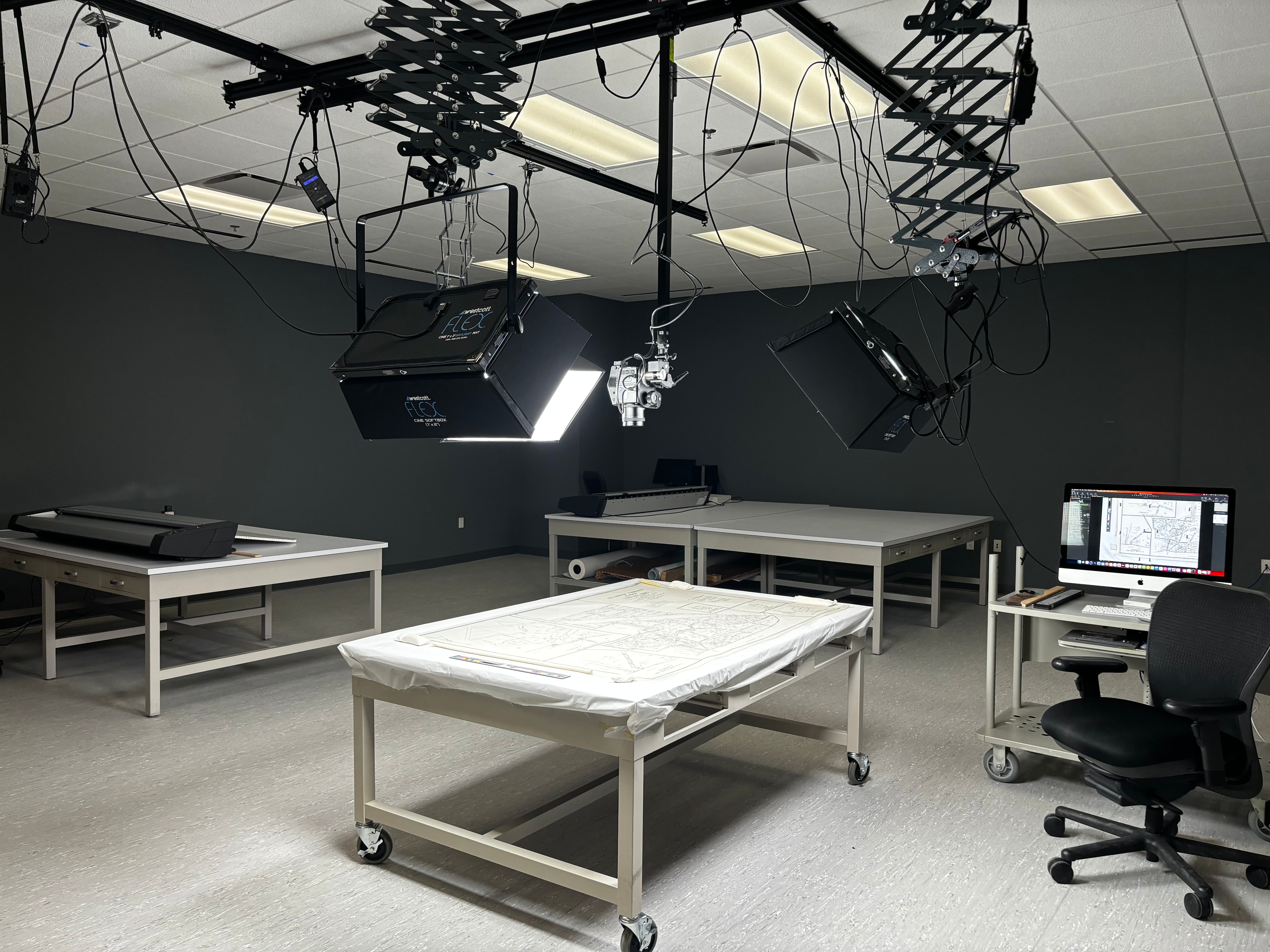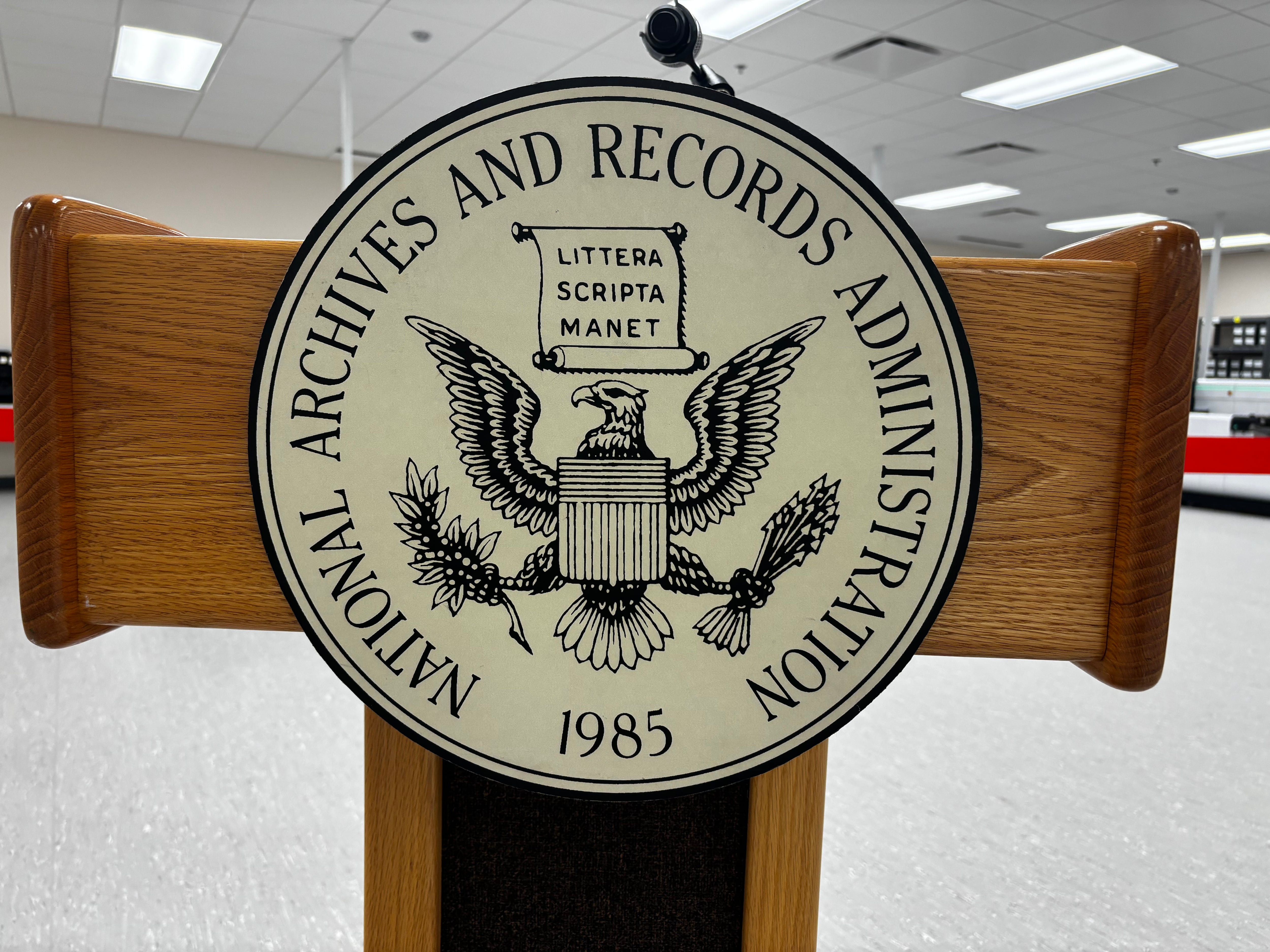Few in government know “paperwork” quite like the staff of the National Archives.
There, at the cavernous Archives II building on the outskirts of the University of Maryland’s campus in College Park, paper stacks are not something to be feared, but to be revered.
Unlike much of the federal bureaucracy, the National Archives and Records Administration isn’t in the business of eliminating its paper trails so much as making them last. The way to do that is by digitizing many of its 13 billion records with its own staff, equipment and gumption. Currently, only about 275 million, or 2%, is digitally catalogued.
Much of NARA’s original textual records are available for viewing in-person only, or by requesting reproductions. The way the agency sees it, those invaluable original documents don’t do much good locked away in a temperature-controlled, gray-painted room.
So, by September 2026, NARA is aiming to digitize 500 million pages of records, and even more thereafter. It’s a herculean effort that wouldn’t be possible without the new $20 million, 18,000-square-foot Digitization Center located within a remodeled space in Archives II that is replete with text-scanning equipment, work space, sensitive cameras and upgrades to keep light and humidity damage to a minimum.
“With new high-speed scanners and a dedicated team of digitization staff, this new center is a game changer for the National Archives,” said Colleen Shogan, the 11th archivist of the U.S., on April 12 at a ribbon-cutting ceremony. “It provides us a tenfold increase in our in-house scanning capacity and will help us make millions of original records accessible online for Americans everywhere.”
NARA’s plan fits within the Biden administration’s broader goal to lead a transparent, accessible and modern government. A number of executives orders and memos have come down from the White House prodding agencies to have a digital presence that makes the public service experience seamless and efficient. For NARA, it’s not just about making the “cool” records searchable; it’s also about maintaining critical military records of past and present conflicts, preserving legal decisions for attorneys and researchers, and storing property records of places long since forgotten.
“It’s critical that people like you and an institution like this are making sure we track that [U.S.] history because this is a history that’s going to make a difference,” said Maryland Rep. Glenn Ivey, at the event. “It already does. It inspires people around the world.”
Lawmakers like Ivey, a democrat, have gotten involved in the agency’s digitization push because their support has been critical on the Hill to secure funding. NARA’s budgets included meager increases in recent years, leading to a near-stagnant budget since 1991 when accounting for inflation, according to analysis by George Washington University. For the digitization initiative, the next phase includes building modern labs for digitizing motion picture and audio-video archival records by September. And further down the line, the agency wants to build office and meeting space for Digitization Center staff, additional storage records storage space and cold storage space for its most fragile records.
Already, NARA received $120 million in appropriations beginning in fiscal 2020.
This effort is just starting, but already the technology proves it promise.
A NARA archivist demonstrated how three new IBML conveyer belt scanners — at more than $200,000 each — can digitize up to 314 pages per minute.
That will be critical to a current project on the U.S. Marine Corps Command chronologies spanning the Vietnam War. Without the upgrades, the effort would have taken a decade to fully digitize, but archivists now expect to finish that work in six months.

Next up, almost 1,000 boxes of Alaska civil case files are being prepped for digitization.
In another adjacent room, there’s a futuristic looking scanner that takes cradles old books on glass panes and takes pictures of pages that can’t otherwise be run through a conveyor belt like loose documents can. That camera setup digitizes pages four times faster that other tools. And in yet another room, mounted cameras rove over large maps or drawings that cover an entire table.
The physical equipment is also coupled with IT upgrades and even artificial intelligence that have the potential to autocorrect skew and orientation of scans, making the work of archivists much faster when it comes time for quality control. From there, scans are converted into the right file type for text-searchable access on the catalog.
NARA is not digitizing classified records in the center, Margo Allen, a spokeswoman for the agency, said.
“We will be able to unlock an enormous number of stories that are here at the National Archives,” Shogan said.
Molly Weisner is a staff reporter for Federal Times where she covers labor, policy and contracting pertaining to the government workforce. She made previous stops at USA Today and McClatchy as a digital producer, and worked at The New York Times as a copy editor. Molly majored in journalism at the University of North Carolina at Chapel Hill.





